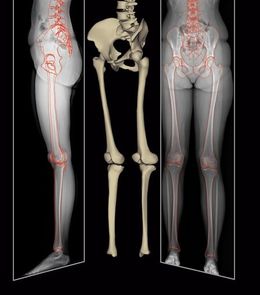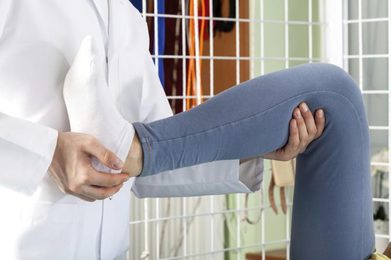During preoperative surgical assessment Dr Giotikas will examine you and will review the CT scannogram to determine which bones will be lengthened and for how much and whether or not soft tissue releases are going to be needed. Measurements include the length, alignment and any deformity of your bones (bowing or twisting). Depending on these features Dr Giotikas will suggest whether a Precise nail or a circular frame (Ilizarov or TSF) is more appropriate for you and why. Dr Giotikas will also examine the range of movement of your hip, knee, and ankle and the tightness of your muscles to determine whether some minor auxiliary procedures will be required in your case or not. These procedures refer to the lengthening of some tendons and they can be performed either from the beginning, i.e during the initial operation, or later during the lengthening phase, should they become necessary. Dr Giotikas will also ask you structured questions about your work, hobbies, and lifestyle in order to understand your functional needs.





 Psychological evaluation prior to any cosmetic procedure is advised in the updated Guidelines of NICE Institute of Clinical Excellence of the United Kingdom. This is done with a validated screening questionnaire (Cosmetic Procedures Screening Questionnaire- COPS) and according to the score, an interview with a psychologist may be advised. The main purpose is to distinguish those rare cases suffering from psychosis to whom stature lengthening will not improve the quality of their lives. It also serves the purpose of identifying the potential need for psychological support during the recovery period.
Psychological evaluation prior to any cosmetic procedure is advised in the updated Guidelines of NICE Institute of Clinical Excellence of the United Kingdom. This is done with a validated screening questionnaire (Cosmetic Procedures Screening Questionnaire- COPS) and according to the score, an interview with a psychologist may be advised. The main purpose is to distinguish those rare cases suffering from psychosis to whom stature lengthening will not improve the quality of their lives. It also serves the purpose of identifying the potential need for psychological support during the recovery period.